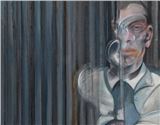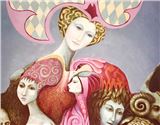Civilization: The Way We Live Now
Civilization: The Way We Live Now presents more than 250 works by over 120 of the world’s most renowned photographic artists, offering a complex and sprawling vision of contemporary life. The images gathered here, produced in the past 25 years, speak to the changes brought about by globalization, and draw attention both to the increasing amount of complexity and conflict, and to the unprecedented degree of interdependence, that characterize life today. They attest, as well, to the development of the medium of photography, and its ability to document these sweeping changes.
In his 2011 book, Civilization, the historian Niall Ferguson notes: “These days most people around the world dress in much the same way: the same jeans, the same sneakers, the same T-shirts… It is one of the greatest paradoxes of modern history that a system designed to offer infinite choice to the individual has ended up homogenizing humanity.” This paradox lies at the core of “Civilization,” which strives to explain the “complex whole” that is modern society, in all its spiritual and material richness. The photographers in this exhibition depict, reveal, examine, criticize and otherwise reflect our hyper-modern and complex social terrain, from Edward Burtynsky’smassively transformed landscapesto Lauren Greenfield’s revealing urban portraits,from Toshio Shibata’s highly ordered tableaus to Xing Danwen’s electronic pollution.
The exhibition is divided into eight sections. “Hive” explores the systems of cohabitation and collaboration that have developed in urban settings. “Alone Together” documents the solidarities and estrangements found within communities, as well as the effect of the internet on sociality. “Flow” testifies to the accelerated production and widening wealth gap in the post-industrial world. “Persuasion” explores the power of symbolic capital, from marketing strategies to consumption habits, from religious beliefs to personality cults. “Control” examines humanity’s ability to create order, resolve disputes, and organize political and social structures. “Rupture” focuses on the breakdown of this order, and the conflicts between individuals and collectives. “Escape” follows the ascent of recreational culture, where relaxation, entertainment, adventure, and thrill-seeking offer freedom from the given. Finally, “Next” presents visions of the future, questioning teleological narratives of development.

Recommended for you
Civilization: The Way We Live Now presents more than 250 works by over 120 of the world’s most renowned photographic artists, offering a complex and sprawling vision of contemporary life. The images gathered here, produced in the past 25 years, speak to the changes brought about by globalization, and draw attention both to the increasing amount of complexity and conflict, and to the unprecedented degree of interdependence, that characterize life today. They attest, as well, to the development of the medium of photography, and its ability to document these sweeping changes.
In his 2011 book, Civilization, the historian Niall Ferguson notes: “These days most people around the world dress in much the same way: the same jeans, the same sneakers, the same T-shirts… It is one of the greatest paradoxes of modern history that a system designed to offer infinite choice to the individual has ended up homogenizing humanity.” This paradox lies at the core of “Civilization,” which strives to explain the “complex whole” that is modern society, in all its spiritual and material richness. The photographers in this exhibition depict, reveal, examine, criticize and otherwise reflect our hyper-modern and complex social terrain, from Edward Burtynsky’smassively transformed landscapesto Lauren Greenfield’s revealing urban portraits,from Toshio Shibata’s highly ordered tableaus to Xing Danwen’s electronic pollution.
The exhibition is divided into eight sections. “Hive” explores the systems of cohabitation and collaboration that have developed in urban settings. “Alone Together” documents the solidarities and estrangements found within communities, as well as the effect of the internet on sociality. “Flow” testifies to the accelerated production and widening wealth gap in the post-industrial world. “Persuasion” explores the power of symbolic capital, from marketing strategies to consumption habits, from religious beliefs to personality cults. “Control” examines humanity’s ability to create order, resolve disputes, and organize political and social structures. “Rupture” focuses on the breakdown of this order, and the conflicts between individuals and collectives. “Escape” follows the ascent of recreational culture, where relaxation, entertainment, adventure, and thrill-seeking offer freedom from the given. Finally, “Next” presents visions of the future, questioning teleological narratives of development.
Artists on show
- Adam Ferguson
- Alec Soth
- Alejandro Cartagena
- Alex MacLean
- Alex MacLean
- Alfred Ko
- Amalia Ulman
- Andreas Gefeller
- Andrew Moore
- Andrew Roberts
- Andy Freeberg
- An-My Lê
- Ann Mandelbaum
- Anne Zahalka
- Benny Lam
- Brian Ulrich
- Candida Höfer
- Cara Phillips
- Carlo Valsecchi
- Chris Jordan
- Christoph Gielen
- Cyril Porchet
- Damon Winter
- Dan Holdsworth
- Daniel Berehulak
- David Maisel
- David Moore
- David Moore
- David Moore
- Dona Schwartz
- Eason Tsang Ka Wai
- Edgar Martins
- Edward Burtynsky
- Evan Baden
- Francesco Zizola
- Gabriele Galimberti
- George Georgiou
- George Pol Georgiou
- Gerco de Ruijter
- Han Sungpil
- Hao Hong
- Henrik Spohler
- Irene Kung
- Jeffrey Milstein
- Katy Grannan
- Larry Sultan
- Lauren Greenfield
- Lee Friedlander
- Lois Conner
- Lois Green Cohen
- Lynne Cohen
- Mandy Barker
- Mark Power
- Mark Power
- Massimo Vitali
- Matthieu Gafsou
- Mauricio Lima
- Max Aguilera-Hellweg
- Michael Light
- Michael Najjar
- Michael Wolf
- Michele Borzoni
- Mike Kelley
- Mishka Henner
- Mitch Epstein
- Murray Ballard
- Nadav Kander
- Natan Dvir
- Neil Pardington
- Nick Hannes
- Olaf Otto Becker
- Olivier Christinat
- Olivo Barbieri
- Onejoon Che
- Pablo López Luz
- Paolo Woods
- Patrick Weidmann
- Paul Bulteel
- Paul Shambroom
- Penelope Umbrico
- Peter Bialobrzeski
- Philippe Chancel
- Pieter Hugo
- Polit-Sheer-Form Office
- Priscilla Briggs
- Raimond Wouda
- Reiner Riedler
- Richard de Tscharner
- Richard Misrach
- Richard Moore
- Richard Moore
- Richard Mosse
- Richard Walker
- Robert J. Phillips
- Robert Polidori
- Robert Walker
- Robert Walker
- Robert Walker
- Robert Zhao Renhui
- Roger Eberhard
- Sergey Ponomarev
- Simon Norfolk
- Simon Roberts
- Thomas Struth
- Thomas Weinberger
- Toshio Shibata
- Trent Parke
- Valérie Belin
- Vera Lutter
- Victoria Sambunaris
- Vincent Fournier
- Walter Niedermayr
- Wang Qingsong
- Will Steacy
- Xing Danwen
- Yeondoo Jung
- Zhang Xiao
Related articles
This spring is shaping up to be a busy season one on the art calendar, with both the Whitney Biennial and the Venice Biennale opening within weeks of each other in May, and notable exhibitions taking place all over in the coming months, from a trailblazing survey of art after...
This week’s exhibitions examine socio-political narratives. Exploring the human impact of power structures, globalisation and consumption, each show draws a portrait of a changing world.

 ARTISTS
ARTISTS
















